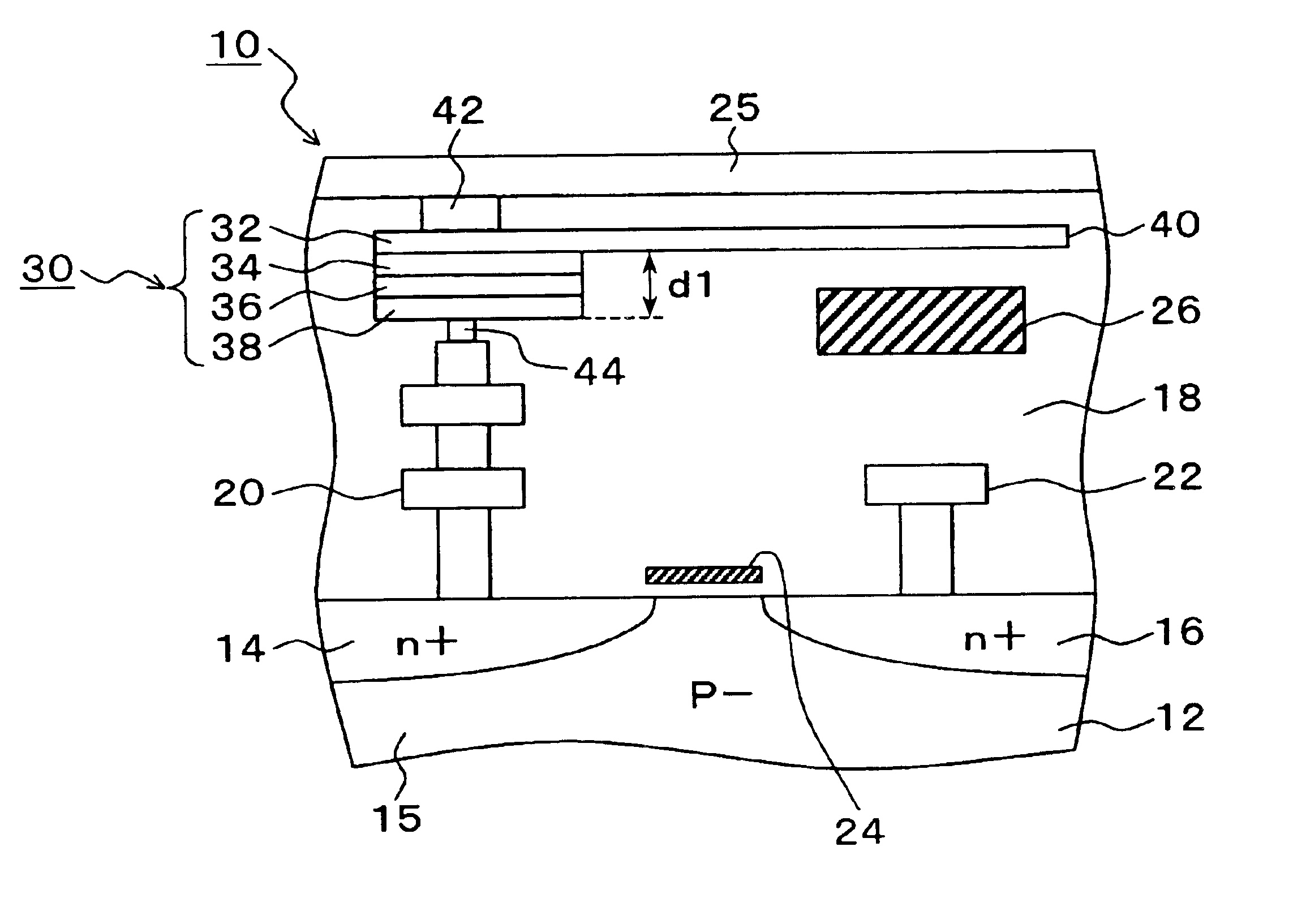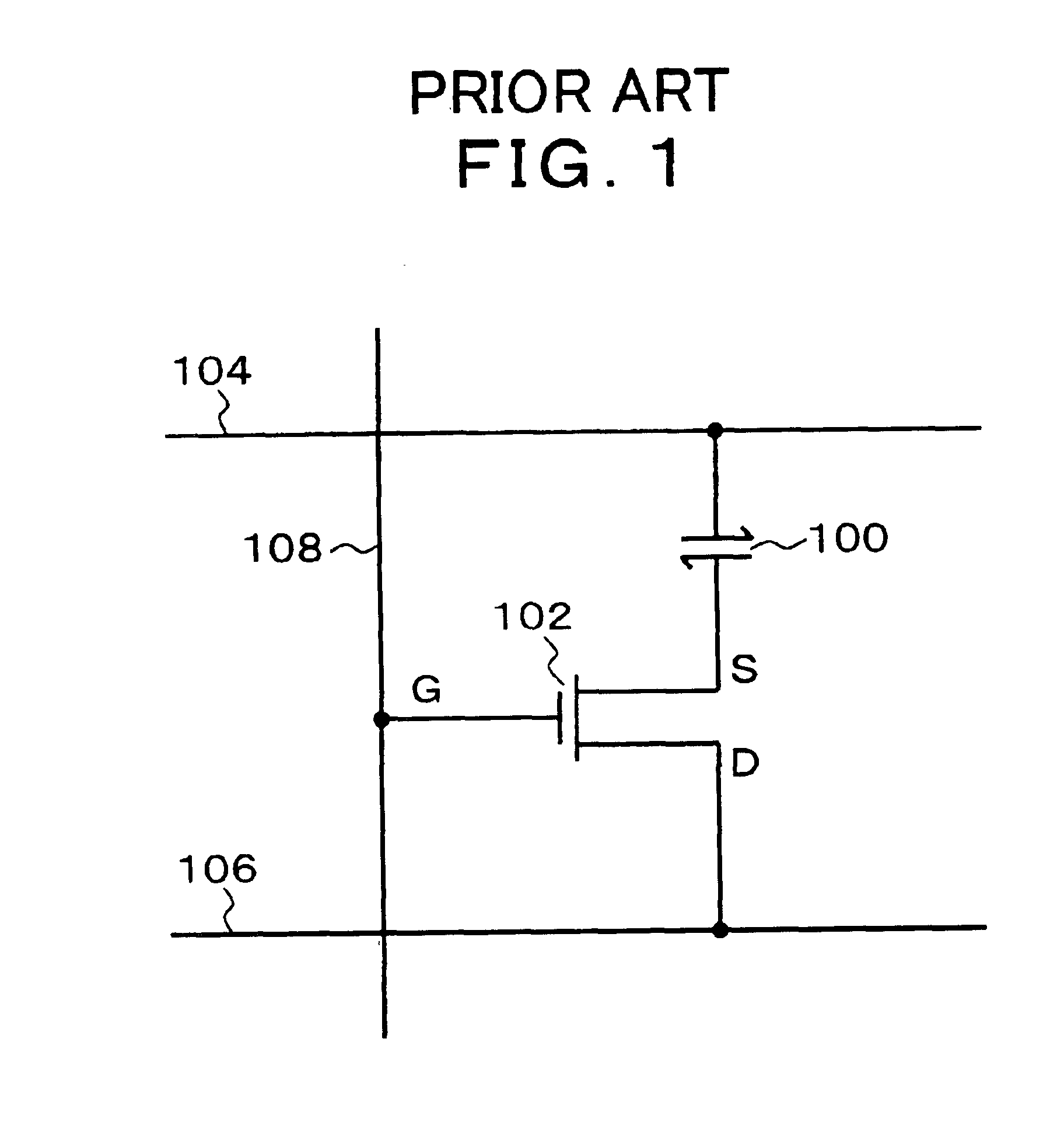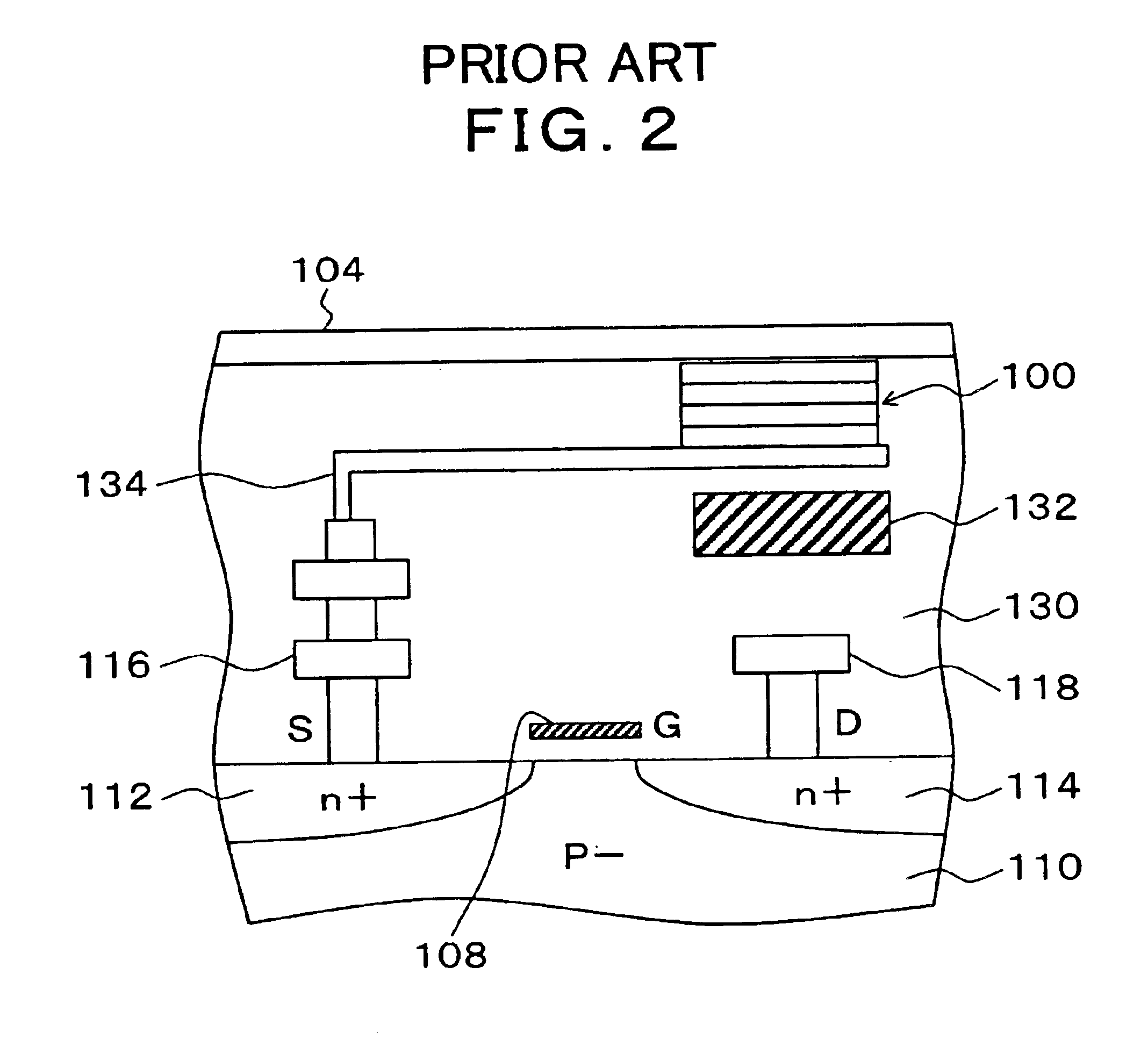Magnetoresistive memory apparatus
a memory apparatus and magnetoresistive technology, applied in the field of magnetoresistive memory apparatus, can solve the problems of difficult higher density and inability to tunnel, and achieve the effect of low power consumption
- Summary
- Abstract
- Description
- Claims
- Application Information
AI Technical Summary
Benefits of technology
Problems solved by technology
Method used
Image
Examples
Embodiment Construction
[0040]FIG. 8 is a cross sectional view illustrating an embodiment of a cell structure of one (1) cell in a magnetoresistive memory apparatus of the present invention. In FIG. 8, the magnetoresistive memory apparatus 10 of the present invention forms an inter-layer insulating film 18 on a semiconductor substrate 12 which is comprised of a source area 14, a gate area 15 and a drain area 16, and in this film, a memory device using a ferromagnetic tunnel junction device 30 is provided. In other words, to the source area 14 and the drain area 16 on the semiconductor substrate 12, electrodes are formed by embedding Cu or the like with formation of contact holes, and a read word line 24, which acts as a gate using Cu , is also provided in close vicinity to the gate area 15. To the upper part of the source electrode 20, a magnetic tunnel junction device (MTJ) 30 is provided via a conductor layer 44. To the upper part of the magnetic tunnel junction device 30, a bit line 25 is connected via ...
PUM
 Login to View More
Login to View More Abstract
Description
Claims
Application Information
 Login to View More
Login to View More - R&D
- Intellectual Property
- Life Sciences
- Materials
- Tech Scout
- Unparalleled Data Quality
- Higher Quality Content
- 60% Fewer Hallucinations
Browse by: Latest US Patents, China's latest patents, Technical Efficacy Thesaurus, Application Domain, Technology Topic, Popular Technical Reports.
© 2025 PatSnap. All rights reserved.Legal|Privacy policy|Modern Slavery Act Transparency Statement|Sitemap|About US| Contact US: help@patsnap.com



